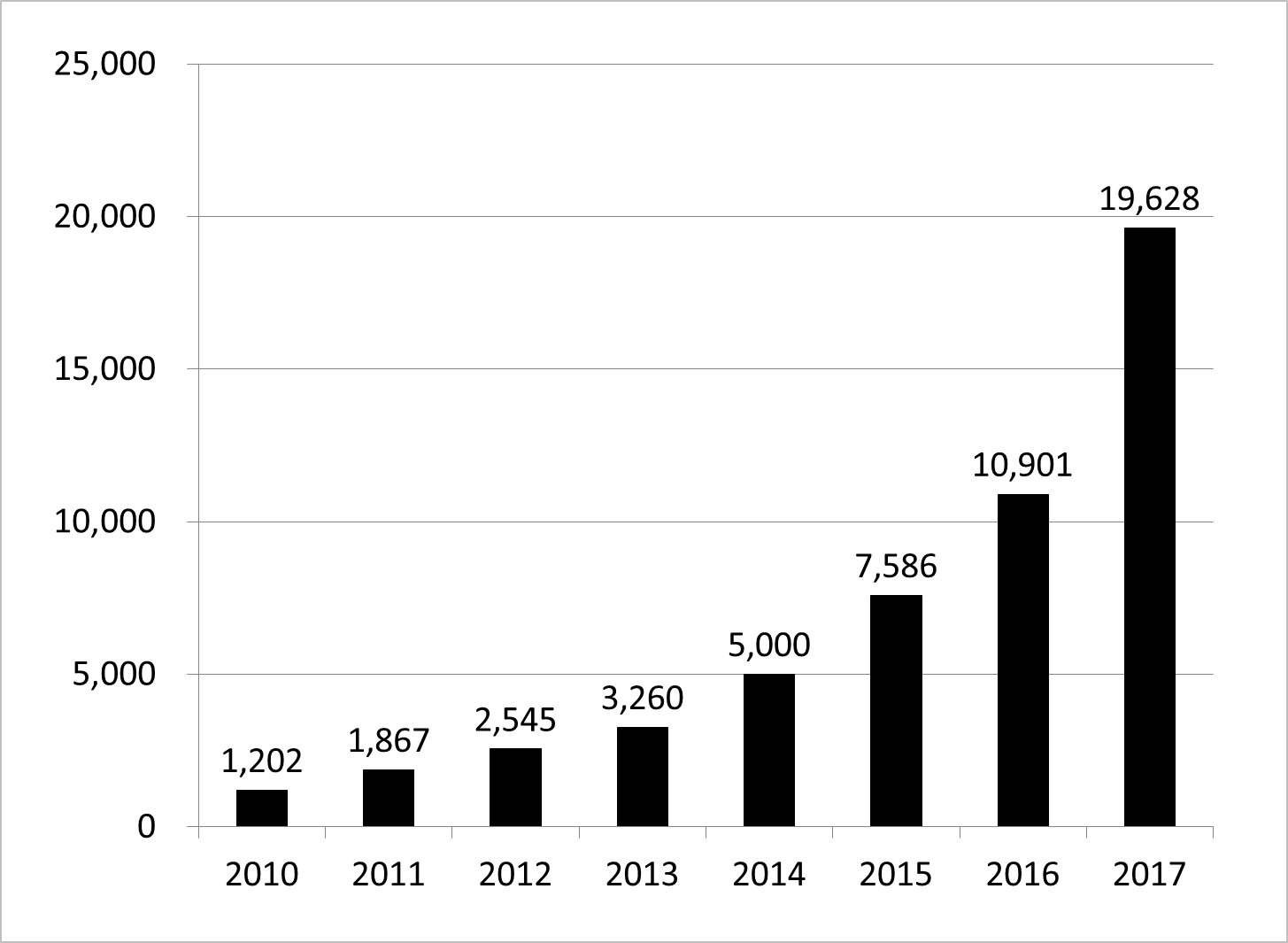Column Finance and the Social Security System 2018.03.09
【Aging, safety net and fiscal crisis in Japan】No.57: The Reason Why the Number of Refugee Applicants Soared
According to statistics released by the Ministry of Justice in January 2018, the number of people who applied for a refugee status in 2017 was 19,628, an 80% increase over the previous year. However, the number of people who were actually granted a refugee status has decreased from 28 to 20. The reason is that the majority of applicants are actually applying with the intent to work in Japan.
As shown in Figure 1, the number of refugee applicants has increased sharply since 2010. This is due to the fact that Japan's government began to allow applicants to obtain employment six months after they have applied for refugee status. The purpose of this measure is to support the living of refugee applicants during the application review. There are many foreigners who exploit the government's policy, using loopholes to continue working in Japan and avoid being regarded as illegal. As a result, the administrative process of refugee applications has been obstructed. Therefore, the government started a scheme to verify the authenticity of refugee status in January 2018.
Many of the refugee applicants are low-skilled workers. The government is not going to allow workers who do not have expert skills and experience to stay in Japan. However, as the labor force population declines, it is also true that these people are valuable workers as well. Therefore, it is necessary to design an institution to accept low-skilled workers.

(Source)Ministry of Justice

